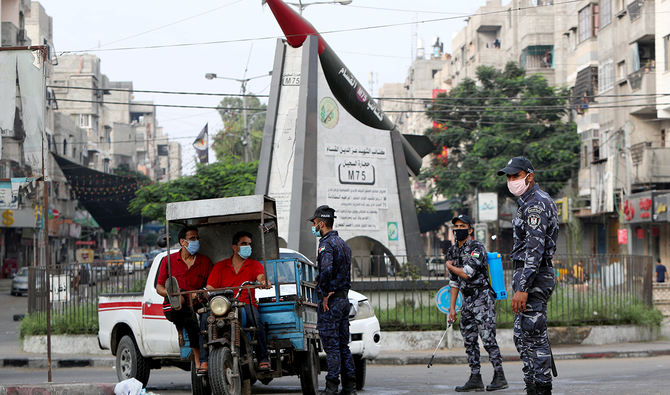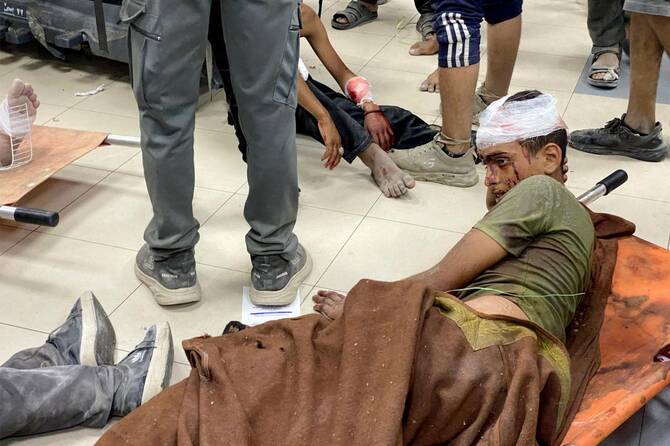GAZA CITY: Hamas and Israel on Tuesday agreed to a cease-fire in the Gaza Strip following three weeks of border violence.
The sides committed to implementing the terms of a truce brokered by Egypt, Qatar, and the UN in October 2018.
Observers said the agreement would allow Israel to switch its focus to fighting the coronavirus disease (COVID-19) outbreak in the country where 117,241 cases had so far been recorded.
In a statement issued immediately after the cease-fire was announced, the head of Hamas’ political office in Gaza, Yahya Sinwar, said the agreement would contribute to “containing escalation and stopping the Israeli aggression” on Gaza.
Hamas added that a number of projects aimed at alleviating the effects of the COVID-19 pandemic in Gaza would soon be announced.
Following the truce agreement, Israel reopened the only commercial crossing through which goods and fuel can pass to the enclave at Kerem Shalom, after restrictions had been imposed three weeks ago stopping fuel supplies, which resulted in power cuts throughout Gaza.
The Israelis also allowed the resumption of fishing for a distance of 15 nautical miles (28 km) out to sea.
Factions in Gaza agreed to stop launching rockets and incendiary balloons into Israeli communities, and to end night protests.
Hamas officials were understood to have been mainly calling for a return to the terms of the 2018 accord and the suspension of Great Return March activities. At the time, the understandings included vital projects funded by Qatar in relation to resolving Gaza’s long-running electricity supply crisis, the opening of an industrial zone at the Erez border crossing, the creation of job opportunities, and the easing of restrictions on exports and imports.
Hamas’ political bureau member, Osama Hamdan, said: “The resistance is in scoring stage, and it has not come out of this confrontation losing, and what it has achieved is appropriate in the context of the continuation of the confrontation that aims to completely break the siege.
“The leadership of the resistance factions was interested in achieving an agreement that would allow our people to confront the (COVID-19) pandemic, and that the occupation would not benefit from this crisis to put pressure on our people.”
Adnan Abu Amer, a columnist specializing in Israeli affairs, said that the agreement had been a point-scoring exercise for both sides but a victory for neither.
He added that Hamas was faced with deteriorating humanitarian and economic conditions in Gaza and the deal would allow vital projects to go ahead while giving Israel peace of mind over the threat of border attacks.
Amer noted that the COVID-19 outbreak in Gaza had heaped further pressure on Hamas.
However, journalist Fathi Sabah, felt that the agreement had achieved nothing for Hamas and Gaza and only carried “promises” to implement projects that had already been agreed on, but Israel had refused to implement since 2018.
Sabah told Arab News: “Hamas found itself obliged to respond to the efforts to calm down, as it is more aware than others that the situation in Gaza does not allow things to deteriorate into a war, as 2 million Palestinians are in exhausted conditions, and the (COVID-19) pandemic has made the situation worse.”






















